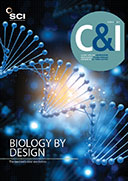To catch a criminal
Reviewer
John Bond
If one was asked to think of an expression that covered the extent of forensic science in criminal justice, then ‘from crime scene to court’ would seem to fit the bill. From the recovery of items, through to experimental analysis, interpretation and finally the expression of opinion in a courtroom, forensic science is a significant factor in the detection of many different offences. Arguably, the most crucial link in this forensic chain is the interpretation of the value of the evidence. This is particularly so when the evidence is highly discriminating, such as fingerprints, DNA or a rarely encountered soil type.
The interpretation of evidence relates not only to the likelihood of establishing an association between the defendant and the victim or the crime scene, but also to determining whether or not the defendant committed the crime. Evidence types that are commonly encountered, such as glass or fibres, often present the forensic scientist with the most difficulty in interpreting their evidential value.
When forensic evidence that was accepted at a trial is subsequently rejected by a court of appeal, the perception is often that in some way the evidence was flawed. While human error or failure to follow accepted practice can result in poor scientific method, a badly considered interpretation of the strength of the evidence can also be the cause.
In this fourth edition of Crime scene to court: the essentials of forensic science, Peter White has gathered experts from a wide range of disciplines to explain to those with limited scientific knowledge how many different evidence types can be used to detect crime. In addition to covering commonly encountered and well-known evidence types, such as DNA and footwear, he includes disciplines that are less well-known in a forensic context, such as ecology. Given the diverse range of evidence, it is a pity that there is not a chapter devoted to the statistical tools necessary to interpret the strength of forensic evidence.
Invariably, in a book that is a compilation by many authors, there is a certain amount of repetition, which could have been avoided. The book would also benefit from some continuity between related chapters. For example, the chapter entitled Identifying an individual deals mostly with fingerprints although DNA profiling, which would seem just as relevant here, is dealt with in a separate chapter.
For the intended audience, this book will provide a useful insight and reference into the many and varied forensic disciplines and I would recommend this work to students and professionals with an interest in understanding how forensic science is used to detect crime.
John Bond is associate professor in the department of criminology at the University of Leicester, Leicester, UK.
The best way to keep up to date with all of the latest, cutting edge technologies from the lab to the market!
Author
Publisher
Pages
Price
ISBN





